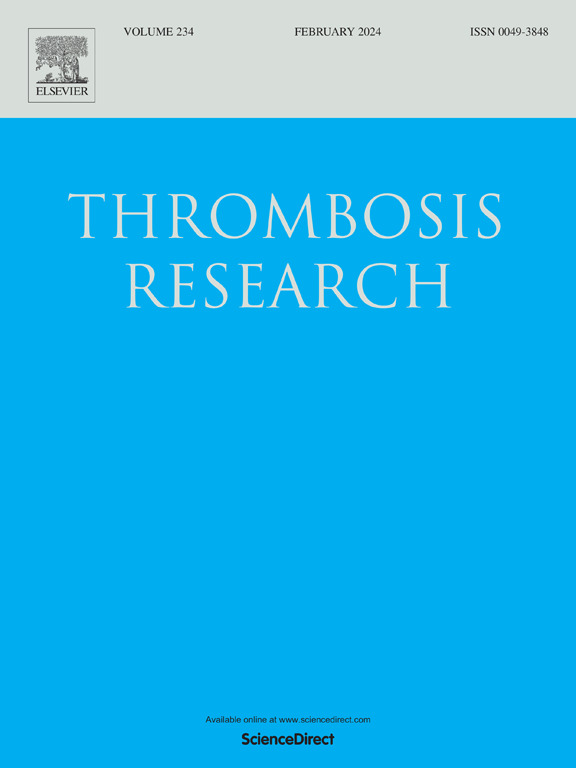Functionally distinct anticoagulant mechanisms of endothelial cells
IF 3.7
3区 医学
Q1 HEMATOLOGY
引用次数: 0
Abstract
Antithrombin and tissue factor pathway inhibitor (TFPI) provide different anticoagulant mechanisms. Having established a potent anticoagulant role of cultured human umbilical vein endothelial cells in vessel-on-a-chip microfluidic models, we now investigated how these cells modulated thrombin generation under stasis through antithrombin and TFPI pathways. We observed that endothelial monolayers in 96 well-plates strongly delayed and suppressed the thrombin generation process induced by tissue factor, regardless of the presence of whole blood, platelet-rich plasma or platelet-free plasma. Intervention studies indicated that the blocking of heparin-like proteoglycans with polybrene or protamine sulphate, similarly as the absence of antithrombin in plasma, reverted the endothelial anticoagulant activity. Heparinase treatment of the cells also reduced the anticoagulant potential. Furthermore, the presence of andexanet-alpha (inactivated factor Xa) and an anti-TFPI antibody were able to revert the endothelial effects. Jointly, these data point to additive anticoagulant mechanisms of endothelial cells through surface-expressed heparin-like proteoglycans and TFPI, both contributing to thrombin inhibition.
内皮细胞功能独特的抗凝机制。
抗凝血酶和组织因子通路抑制因子(TFPI)提供了不同的抗凝机制。在芯片血管微流体模型中建立了培养人脐静脉内皮细胞的强效抗凝作用后,我们现在研究了这些细胞如何通过抗凝血酶和 TFPI 途径调节凝血酶的生成。我们观察到,无论存在全血、富血小板血浆还是无血小板血浆,96 孔板中的内皮单层细胞都能强烈延缓和抑制组织因子诱导的凝血酶生成过程。干预研究表明,用聚炳烯或硫酸原胺阻断肝素样蛋白聚糖,就像血浆中没有抗凝血酶一样,可恢复内皮细胞的抗凝血活性。对细胞进行肝素酶处理也会降低抗凝潜能。此外,andexanet-alpha(灭活的 Xa 因子)和抗 TFPI 抗体的存在也能恢复内皮的作用。这些数据共同表明,内皮细胞通过表面表达的肝素样蛋白多糖和 TFPI,具有相辅相成的抗凝机制,两者都有助于抑制凝血酶。
本文章由计算机程序翻译,如有差异,请以英文原文为准。
求助全文
约1分钟内获得全文
求助全文
来源期刊

Thrombosis research
医学-外周血管病
CiteScore
14.60
自引率
4.00%
发文量
364
审稿时长
31 days
期刊介绍:
Thrombosis Research is an international journal dedicated to the swift dissemination of new information on thrombosis, hemostasis, and vascular biology, aimed at advancing both science and clinical care. The journal publishes peer-reviewed original research, reviews, editorials, opinions, and critiques, covering both basic and clinical studies. Priority is given to research that promises novel approaches in the diagnosis, therapy, prognosis, and prevention of thrombotic and hemorrhagic diseases.
 求助内容:
求助内容: 应助结果提醒方式:
应助结果提醒方式:


